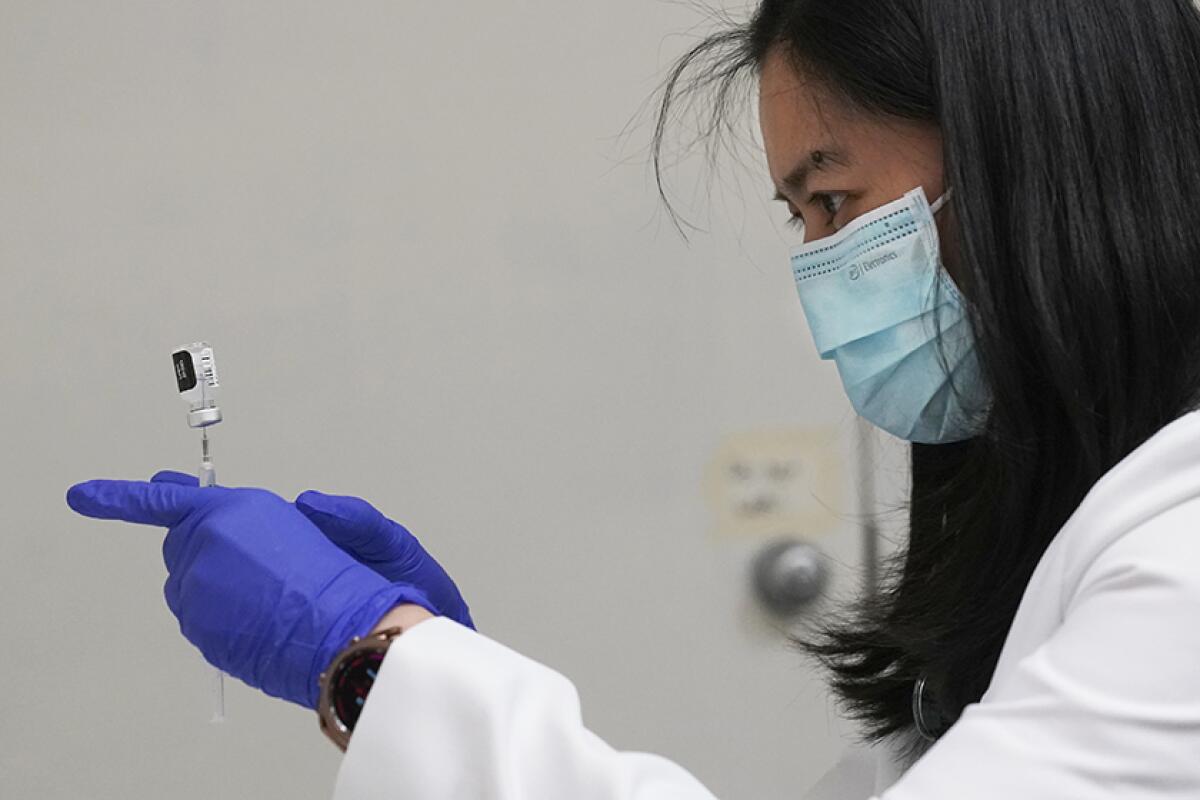California will prioritize COVID-19 vaccine by age, not occupation, in next rounds

In a significant reshuffling of vaccine eligibility guidelines, California officials said Monday they will be shifting who is prioritized in the next round of COVID-19 inoculations to focus on age rather than specific occupations considered higher risk.
The modifications announced Monday by Gov. Gavin Newsom leave unchanged the current priority list, which focuses on healthcare workers and residents 65 and older before expanding to teachers, farmworkers and first responders.
But there will be shift in who gets the vaccine after them. Under the original plan’s tier structure, Tier 2 workers in manufacturing, transportation and commercial and residential settings along with incarcerated people and the homeless would be prioritized.
Under the new plan, the next priority would be people under 65 years old. No details about the criteria were released Monday, but they could end up focusing on people over 50 first.
The move comes as California still is struggling to get enough vaccine to meet demand. Last week, state officials said it could take until June to get vaccinations to all those 65 and older. Los Angeles County estimated all residents might not be vaccinated until 2022 unless more supply becomes available.
“We realize we have got to increase throughput here and while we are proud of the framework we put out … we recognize that it has advantages and disadvantages as it relates to speed and efficiency,” Newsom said.
The topic of changing eligibility is one that has regularly come up during the state’s vaccine advisory committee meetings. Last week, some members raised concerns that individuals who suffer from chronic illnesses and disabilities were being left behind in the current rollout plan.
“From our perspective, if we wait until May to get to other populations, a lot of people under 65 are going to die unnecessarily,” Andy Imparato of Disability Rights California said during Wednesday’s meeting.
The state has so far administered more than 2.4 million vaccine doses and more than 4.5 million doses have been shipped to health providers. Currently, state and county officials have said there is not enough vaccine supply to match goals to vaccinate the masses.
State epidemiologist Dr. Erica Pan said last week that the state is receiving 300,000 to 500,000 doses each week. In Los Angeles County, 500,000 doses would be needed per week in order to vaccinate all adults by mid-summer, chief science officer Dr. Paul Simon said Friday. But at the rate that current allocation is going, efforts would continue well into 2022.
Bob Schoonover, president of Service Employees International Union California, said the shift to age-based decisions over occupational risks in the next tier runs counter to research that shows workplaces are a major source of the spread.
“Millions of working Californians, most of them people of color, have no choice but to leave their homes and work each day, exposing themselves, their families, and their communities to COVID-19 and its devastation,” Schoonover said in a statement.
More to Read
Start your day right
Sign up for Essential California for news, features and recommendations from the L.A. Times and beyond in your inbox six days a week.
You may occasionally receive promotional content from the Los Angeles Times.








